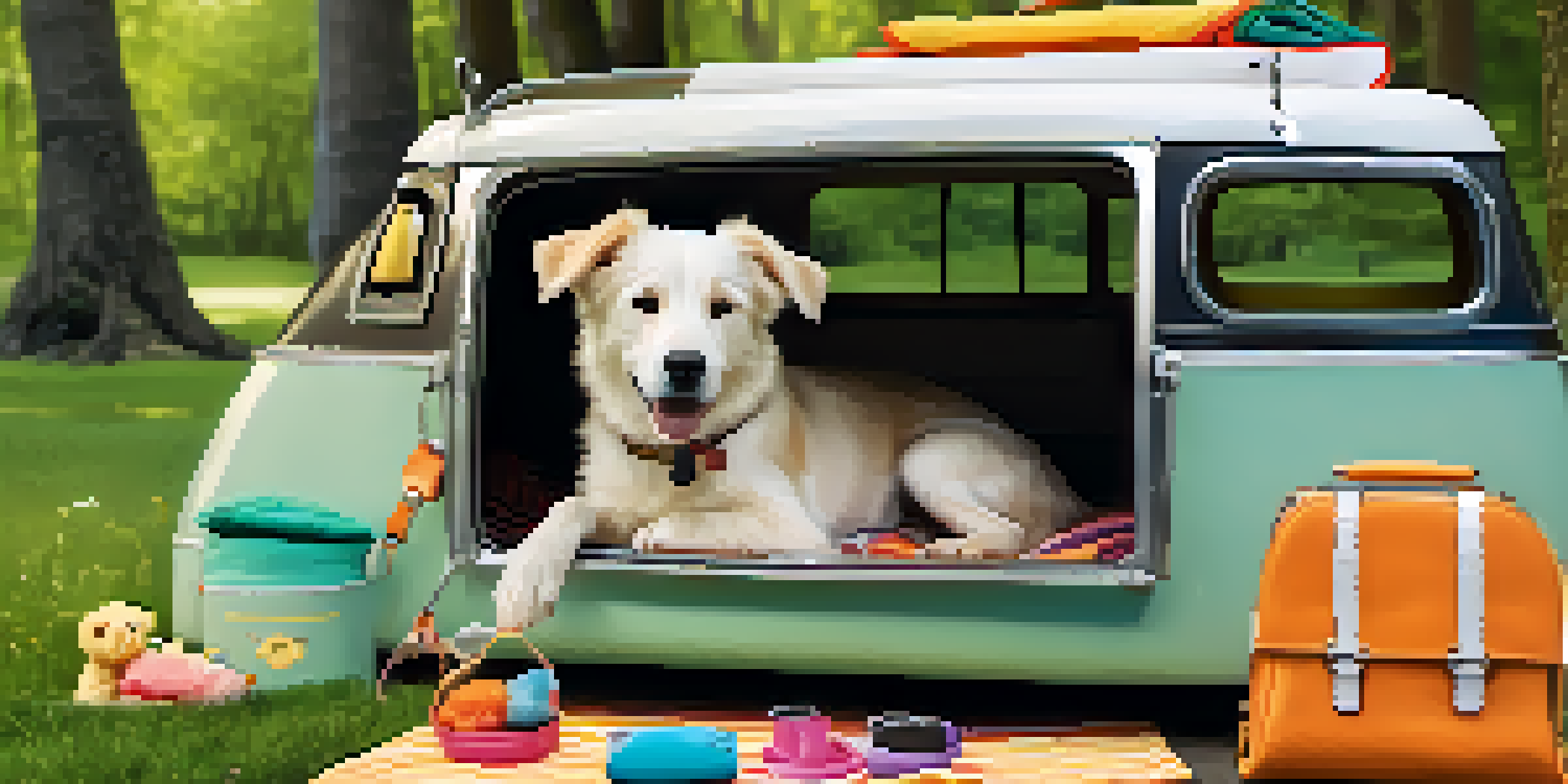Preparing Your Pet for Travel: Essential Checklists

Understanding Your Pet's Travel Needs
Every pet has unique travel needs based on their species, age, and temperament. For example, dogs may thrive in a car ride, while cats often prefer the comfort of home. Understanding these preferences is crucial for a smooth journey.
Traveling with pets can be a wonderful adventure, but it requires planning and preparation to ensure a smooth journey.
Consider your pet's health as well. Some pets may require a vet check-up before traveling, especially if they have existing health issues. Ensuring your pet is fit for travel will give you peace of mind and keep them comfortable.
Don’t forget to factor in your destination as well. Different climates and environments can affect your pet differently. Researching these aspects will help you prepare better and ensure a happy travel experience.
Vet Visits: Ensuring Health and Safety
Before any trip, a visit to the vet is essential. This allows you to confirm that your pet is healthy and up-to-date on vaccinations, especially if you're traveling to new areas. Some places require specific vaccinations, so it's best to check in advance.

If your pet takes medication, ensure you have enough for the duration of your trip. Additionally, ask your vet for advice on handling any potential travel anxiety your pet might experience. They may suggest calming supplements or strategies to ease your pet’s mind.
Know Your Pet's Travel Needs
Understanding your pet's unique preferences and health requirements is essential for a smooth travel experience.
Lastly, get a copy of your pet’s health records. This can be invaluable in case of emergencies while traveling. Having this documentation can also make it easier to find a veterinarian if needed during your trip.
Packing Essentials for Your Pet
When packing for your pet, think of their daily needs. Items like food, water, bowls, leashes, and waste bags are crucial. Remember, your pet's comfort is important, so consider packing their favorite blanket or toy too.
Pets are not just animals; they are family, and we must care for their needs just as we would our own.
For longer trips, don’t forget about grooming supplies. A brush or comb can help keep your pet comfortable, especially if they're prone to shedding. Plus, maintaining their hygiene will make for a more pleasant travel experience for everyone.
Lastly, ensure you have proper identification for your pet. A collar with an ID tag and a microchip can be lifesavers in case they get lost. This step is often overlooked but can significantly increase the chances of a happy reunion.
Choosing the Right Travel Carrier
Selecting an appropriate carrier is vital for your pet’s safety and comfort. The carrier should be well-ventilated, secure, and large enough for your pet to stand, turn around, and lie down comfortably. A stressed pet can lead to a stressful travel experience for everyone.
If your pet is not used to a carrier, start acclimating them weeks in advance. Create positive associations with the carrier by placing treats and toys inside. This way, your pet will view it as a safe and familiar space rather than a confinement.
Vet Check is Crucial
A pre-travel vet visit ensures your pet is healthy, up-to-date on vaccinations, and prepared for the journey ahead.
Lastly, ensure the carrier is suitable for your mode of travel. Different airlines and transportation methods have specific requirements. Checking these guidelines beforehand will save you from potential headaches at the last minute.
Traveling by Car: Safety First
When traveling by car, safety should be your top priority. Secure your pet in a carrier or use a pet seatbelt to prevent them from moving around too much. This keeps both you and your pet safe while driving.
Plan for regular breaks during your trip. Just as you would for yourself, your pet needs to stretch, relieve themselves, and hydrate. Stopping every couple of hours can help keep your pet calm and comfortable.
Also, familiarize yourself with pet-friendly rest stops along your route. Knowing where you can safely stop to let your pet out can make your journey smoother. Bonus points if you find places with green areas for them to explore!
Flying with Your Pet: What to Know
Flying with your pet requires additional planning and preparation. Start by checking the airline’s pet policy, as different airlines have different regulations regarding pet travel. Some may require pets to travel in the cargo area, while others allow them in the cabin.
Acclimate your pet to their carrier well before the flight. Take them on short car rides to help them get used to being in a confined space. This can help reduce anxiety on the actual travel day.
Pack Essential Supplies
Bringing the right items, including food, water, and identification, is vital for your pet's comfort and safety during travel.
Lastly, consider booking direct flights when possible. Layovers can add to your pet's stress and increase the chances of complications during transit. A direct flight minimizes your pet's travel time and keeps them calmer.
Settling In: Making a New Space Comfortable
Once you arrive at your destination, take some time to make your pet feel at home. Set up a designated area with their bed, toys, and familiar items. This will help them adjust quicker to the new environment.
Stick to your pet’s routine as much as possible. Feeding and walking them at the same times as usual can provide a sense of normalcy, reducing stress and anxiety. It’s amazing how a little familiarity can work wonders for your pet’s comfort.

Finally, keep an eye on your pet’s behavior in the new setting. Some pets may take longer to adjust than others. Be patient, and give them the time they need to explore their surroundings at their own pace.